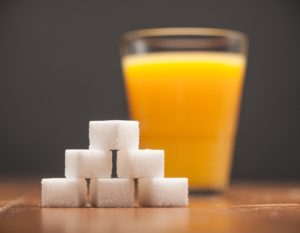 Sugar has been public enemy number one for a couple of years. Sugar intake—by way of added sugars to processed and refined foods—is a significant contributor to several contemporary health issues. Type-2 diabetes, obesity, heart disease risk, and more can all be influenced by sugar intake. High sugar intake may also influence pain and cause mobility issues by triggering inflammation.
Sugar has been public enemy number one for a couple of years. Sugar intake—by way of added sugars to processed and refined foods—is a significant contributor to several contemporary health issues. Type-2 diabetes, obesity, heart disease risk, and more can all be influenced by sugar intake. High sugar intake may also influence pain and cause mobility issues by triggering inflammation.
The good news is that most people are getting the message. A survey by the International Food Information Council Foundation found that 70 percent of Americans have cut back on foods with added sugars. And while people may be eating fewer candies, chocolates, and cupcakes, added sugars are lurking in a lot of unexpected places.
Advertisement
For example, pre-sweetened beverages like soda, specialty coffees, tea, energy drinks, cocktails, fruit-flavored drinks, and flavored water represent about half of the added sugars people consume. Even 100-percent natural fruit juice has about as much sugar as a cola or soft drink. Because the fiber is removed, a glass of orange or apple juice may have the same metabolic impact as a Coke.
Lots of foods you might not associate with sweetness also feature sugar. Flavored yogurt, for example, contains more added sugar than you might think. Even when you subtract naturally occurring sugars in the dairy and fruit, there is still roughly two to four teaspoons in a single, six-ounce portion of flavored yogurt. Other common “health” foods that are heavy on sugar include:
- Protein bars
- Whole grain cereals
- Granola bars
Looking at ingredient lists is an excellent way to identify sugars—but you have to know what you’re looking for. Sugar is not always so easy to spot, and there are roughly 61 different names that sugar goes by. One common ingredient is high-fructose corn syrup. In fact, any time you see an “ose”—dextrose, glucose, fructose—as a single ingredient, it is an added sugar.
Satisfying your sweet tooth doesn’t mean you have to read the ingredients on everything you eat. You can do it by electing to eat fresh or frozen fruit like honeydew, watermelon, cantaloupe, berries, or apples. You can also try sugar substitutes in recipes or cut sugar content in recipes down by one-third. Further, doing your shopping around the perimeter of the grocery store is a great way to limit sugar intake. And when you’re thirsty? Reach for water and flavor it with mint, cherries, lemon, or lime.
